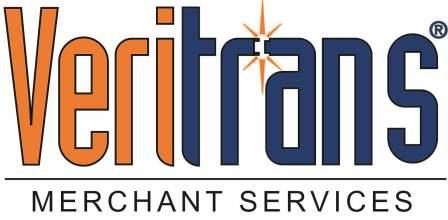E-Commerce Guide for Online Sales
New Online Store? Your Guide to Available E-Commerce Credit Card Payment Services
Did you know that e-commerce accounts for nearly 15% of retail sales in North America?
It’s also responsible for influencing 60% of online retail sales.
If you’re setting up an online store, you can rest assured knowing you’re stepping into a lucrative world!
But you’ll also need to decide on payment options for accepting credit and debit cards online.
How your customers pay for your products is more important than most entrepreneurs realize.
Luckily, there are plenty of payment solutions out there, and we’re here to walk you through them. Keep reading for insight into e-commerce payment services!
E-Commerce Payment Options
E-commerce stores must give customers a way to pay for their online products.
When setting up your online store, you’ll need to decide which payment options you’ll offer your customers. In general, choose what is most convenient for your customer.
Accept Credit and Debit Card Payments
Most online merchants accepts credit or debit card payments. Given that there are 1.5 billion credit cards in the U.S., this payment option is a given!
Merchants will pay a processing fee when accepting payment by credit or debit card. These fees can add up quickly, and may vary depending on the payment provider you’re using. It is important to understand your options, as well as to avoid falling into the trap of getting stuck with only the point of sale provider’s proprietary payment processor as a single option. Having only a single option will lend itself to higher fees as the processor will take advantage of your investment in the product.
It’s also wise to choose a provider that does not restrict the type of credit card accepted. Taking only Visas, for example, is likely to hinder your sales.
E-Commerce Payment Services
Whatever payment options you choose, you’ll need to choose a Merchant Services provider to get setup for accepting card payments online.
Some e-commerce platforms have payment providers built into their system. Usually an aggregator offering a flat rate for all cards, including debit and credit. Not always a good plan, depending on how many debit cards you take as opposed to credit cards. E-commerce business owners can use Shopify Payments to process customer payments, while still having your choice of a credit card payments processor, depending on their preferences and payment options. However, some online POS providers have an extra cost for using a provider of your choice.
Not all payment providers are the same, especially when it comes to fees! Some may have higher processing fees than others, some have fees others don’t. E-commerce payment solutions like Veritrans, on the other hand, can reduce processing cost, while keeping your fees to a minimum. Check out our other articles regarding how to choose a credit card processor.
In fact, here at Veritrans, we enable merchants to accept credit card payments at wholesale rates.
There’s great value in shopping around to find the e-commerce payment solutions that work for you. Doing so can help you spend less on processing fees in the long run.
It can also change the experience for your customers. It’s vital to process payments quickly and securely so that your customers feel confident in their choice for their purchases.
How to Choose the Best One
So how do you choose the best e-commerce payment provider? Here are some tips for researching your options and making the best choice.
1. Assess Fees
This is the biggest thing to consider when choosing e-commerce payment services. All merchants should look at a provider’s transaction fees for processing payments, as well as rates, and any other recurring monthly fees they have.
These aren’t the only fees you can run into, though. Some services also charge merchants a setup fee for getting everything set up and running. Others may have monthly maintenance fees built into their pricing. Be sure to ask for a comprehensive list, and ask how long the pricing will stand. At Veritrans, they’ll guarantee the pricing will never increase for the life of the account.
There may even be other fees, depending on the payment methods you offer your customers.
For this reason, always request a quote from an e-commerce payment provider. Prioritize providers with transparent, up-front pricing and minimal fees to the top of your choices.
2. Think About What You’re Selling
What you sell does have a hand in the e-commerce payment provider you select. What industry is your business a part of?
Some providers cater to specific industries. If you sell a digital service, for example, as a virtual software program, your needs may be quite different from an online men’s fashion retailer.
You may also sell a subscription-based service of some kind. (Think Netflix!) Whatever the case, browse for the payment gateway that will suit these needs best.
3. Payment Options
Identify your payment options before you seek out providers. We’ve already discussed the value of enabling credit card payments on your site.
Other options you choose will largely depend on your target audience. For example, your market research might indicate that most of your users are shopping online with their mobile devices.
Enabling Apple Pay or PayPal in addition to your merchant account, may then enable you to better serve your target audience.
Of course, non-credit card payment options do have downsides. They may mean more processing fees on your end. They may also take your customer off-site, which we discuss in the next step.
You’ll want to make sure the e-commerce payment provider can handle all of the payment methods you’ve chosen.
4. Consider Off-Site vs. On-Site Processing
If you do enable non-credit card payment methods, these platforms may take your customer away from your site to process the payment itself.
For some merchants, this isn’t a problem. For others, it can be risky. Some customers feel uncomfortable navigating away from a merchant’s site, even if they are using a channel like PayPal. We find it best to white label everything; your customer will feel more confident when they know they are paying on your secure website.
Sending customers away from your site can also result in a canceled purchase.
Think about off-site and on-site processing as you browse providers.
5. Technology Integration & Other Options
Merchants often have software they need to integrate with payment processes. These include accounting programs like Quickbooks and POS systems for their credit card transactions.
You may also want to enable recurring payments, or maybe even setup for financing to your customers, depending on your product. Wholesale Payments Partners can discuss these options with you as it pertains to your specific needs.
Think about these needs as you build a list of eligible providers. Yes, it is possible to find a provider that checks all of your boxes!
A good read for additional details on on current and future trends for e-commerce in 2022, “Online Shoppers: Statistics, and Trends for 2022” by the folks at InternetAdvisor.com.
Final Thoughts
The best e-commerce payment services will address all of your needs, including payment methods, low fees, and technology integration. Always request quotes from multiple providers before making your decision!
Now you know how to choose online payment solutions. What happens next?
It’s important to recognize what low credit card processing fees actually mean. Read our tips for doing this now!

